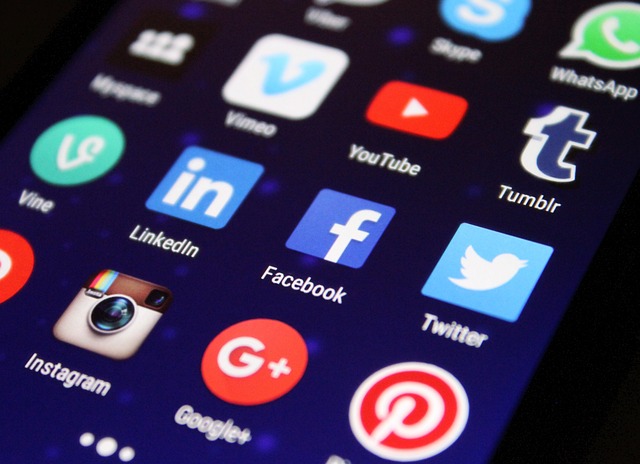In the age of instantaneous communication, our interactions have moved beyond face‑to‑face meetings and text messages to the dynamic landscapes of social media platforms. From the earliest days of online forums to the current omnipresence of Instagram, TikTok, and LinkedIn, these digital arenas have reshaped how we form, nurture, and sometimes fracture relationships. Understanding the subtle ways in which social media influences connection can unlock valuable insights into the modern human experience.
The Digital Mirror: How Online Personas Reflect Reality
We all curate a version of ourselves for the public eye, selecting highlights, filtering tones, and timing posts. This curation acts like a mirror, sometimes reflecting our authentic selves, at other times presenting a polished veneer. The choice of what to share—photos of vacations, job promotions, or heartfelt musings—creates a narrative that others consume and respond to. The pressure to maintain this narrative can influence how we communicate with friends, partners, and colleagues.
- Authenticity vs. Perception: Balancing genuine expression with social expectations.
- Curated Content: The impact of selective storytelling on relationships.
- Digital Footprint: How past posts can resurface in present interactions.
Relationship Lessons in Social Media: The Role of Transparency
Transparency, or the lack thereof, is a recurring theme when exploring relationship dynamics online. When partners share candid updates or discuss their struggles openly, it builds trust and intimacy. Conversely, when a person withholds information or fabricates scenarios, it can erode confidence. The line between healthy openness and oversharing is nuanced; a thoughtful approach to what we disclose online is essential for sustaining healthy bonds.
“The most powerful conversations happen in the moments when we choose to reveal ourselves authentically.” – Anonymous
Social Media as a Catalyst for Connection
One cannot ignore the undeniable fact that social media brings people together across physical boundaries. Long‑distance relationships, global friendships, and professional networks thrive on platforms that enable instant exchange of thoughts and visuals. The speed of communication can reinforce bonds, allowing partners and friends to share everyday moments in real time. However, this immediacy also imposes an expectation for constant engagement, which can lead to fatigue or anxiety.
Managing Expectations in the Digital Age
Setting clear expectations about online presence and response times is vital. Partners who agree to a “no‑screens-before-bed” rule, for instance, cultivate intimacy without digital distraction. Meanwhile, setting boundaries about what is considered “public” versus “private” helps prevent misunderstandings. These agreements are often the unseen scaffolding that supports long‑term digital relationships.
- Define “online time” and “offline time.”
- Agree on what constitutes a social media post.
- Regularly revisit boundaries as relationships evolve.
Communication Styles Shift in Virtual Spaces
In a virtual context, communication relies heavily on tone, emoji usage, and brevity. These factors can alter the meaning of a message dramatically. A sarcastic remark intended as humor may be perceived as criticism if the emoji or context is missing. Likewise, the convenience of text can encourage quick responses that lack depth. Understanding these nuances helps prevent misinterpretation and fosters clearer dialogue.
Emojis and Tone: A Modern Language
Emojis act as a non‑verbal cue, filling the void left by tone of voice or body language. They help readers gauge intent, but they can also lead to misreading when overused or misinterpreted. Cultivating a shared “emoji language” within a relationship ensures that messages carry the intended emotional weight.
“If you can’t read between the lines, you might need a better understanding of emojis.” – Digital Communication Specialist
Conflict Resolution: From DMs to Face‑to‑Face
Disagreements are inevitable in any relationship, and social media often serves as the battleground where these conflicts ignite or intensify. Public posts, comments, or taggings can amplify a personal disagreement into a broader spectacle. Conversely, private direct messages can offer a safer space for negotiation. The choice of medium significantly shapes the trajectory of conflict resolution.
- Public disputes: Increased visibility, higher stakes.
- Private conversations: Reduced pressure, more candid discussion.
Best Practices for Online Conflict Management
When disagreements arise online, it is crucial to step back and assess whether the platform is appropriate for the discussion. Taking a pause, reflecting on emotions, and deciding whether a private chat or a face‑to‑face meeting is needed can prevent escalation. Additionally, acknowledging that a single post is rarely the full story helps reduce snap judgments.
- Pause before replying.
- Consider the audience of the post.
- Switch to a private channel if emotions run high.
Influence of Algorithmic Exposure on Relationships
Algorithms determine which content appears in our feeds, shaping our perceptions of others. Exposure to curated highlights can create unrealistic expectations, fostering jealousy or dissatisfaction. Meanwhile, algorithmic filtering can limit our view of friends’ lives, reducing empathy. Recognizing how these invisible forces shape our experience is a foundational relationship lesson in social media.
Reclaiming Agency Over Our Digital Experience
Users can exercise control over their feeds by unfollowing, muting, or customizing content preferences. By actively curating the digital environment, individuals can mitigate negative emotions and focus on genuine, supportive interactions. The practice of mindful scrolling—consciously deciding what to engage with—enhances emotional resilience in online relationships.
Building Empathy Through Shared Content
When people share personal stories, moments of vulnerability, or achievements, they invite empathy. Observing a friend’s milestone can inspire support, while seeing a partner’s daily challenges can deepen emotional bonds. Social media, therefore, can function as an emotional conduit, encouraging reciprocal care and mutual understanding.
- Celebrating achievements together.
- Supporting during setbacks.
- Encouraging open dialogue about feelings.
Empathy, Authenticity, and Digital Presence
Authentic storytelling—sharing both triumphs and tribulations—cultivates empathy in online communities. When partners consciously share their vulnerabilities, they signal trust, encouraging a reciprocated atmosphere of openness. This reciprocal exchange strengthens the bond and nurtures a resilient relationship foundation.
Maintaining Personal Well‑Being Amid Digital Connectivity
Constant connectivity can blur the lines between personal space and digital engagement. Setting boundaries—such as designated “screen‑free” times—protects mental health and preserves the quality of in‑person interactions. A balanced approach ensures that technology serves as an enhancer, not a detractor, of relationship quality.
Tech‑Free Rituals to Reinforce Intimacy
Shared rituals that exclude screens—dinner without devices, morning walks, or bedtime stories—create pockets of connection that technology cannot replace. By deliberately carving out these moments, couples and friends reinforce emotional closeness and foster a deeper appreciation for one another.
- Weekly digital detox evenings.
- Daily “no‑device” periods.
- Scheduled time for unmediated conversation.
Conclusion: Navigating the Digital Relationship Landscape
The intersection of social media and personal connections offers a complex, evolving terrain. By embracing transparency, setting boundaries, cultivating empathy, and maintaining mindful engagement, individuals can turn potential pitfalls into growth opportunities. The lessons learned online echo into real‑world interactions, guiding how we communicate, resolve conflict, and celebrate each other’s journeys.
Ultimately, the art of relationship lessons in social media lies in intentionality—knowing when to share, when to hold back, and how to use digital tools to deepen rather than dilute the bonds that sustain us. In a world that never stops sharing, mindful participation becomes the compass that steers us toward healthier, more authentic connections.



